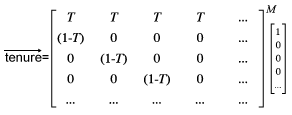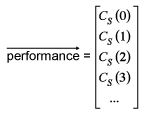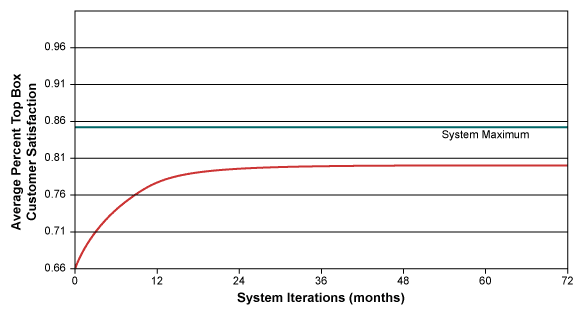
One-agent-at-a-time coaching is the go-to method in call centers for trying to improve center-wide output measures. But it is less valuable than many believe. Through the use of mathematical modeling and simulation, it is possible to see that coaching, even in moderate turnover environments, does not offer a return on investment (ROI). More-effective improvement strategies aimed at lifting the performance of the whole system, such as task consolidation and prerecorded call flows, should be used instead.
Coaching in Error
Dr. W. Edwards Deming, a 20th century quality guru, warned managers about an inference error pertaining to the performance of a team, unit or organization. This is the error: Because coaching may help an individual improve and because the performance of the system is the sum of each worker’s performance, coaching each worker will improve the performance of the system. Deming believed this was faulty logic.
Find Out More
More information on call center improvement can be found in a related article, “Cutting-Edge Methods Help Target Real Call Center Waste” by Dennis Adsit.
In Deming’s view, most coaching efforts are a form of tampering because they try to make improvements to individual components of what is largely common cause variation. He argued that the overall performance of a unit was much more a function of the quality of materials, process design, specs and machine performance – in other words, the “system.” Deming went on to demonstrate that the result of an improvement strategy based on coaching each employee would be no system improvement; rather, it would simply be increased variation in performance. He encouraged management to find ways to lift the performance of the whole system.
There is another practical reason there can be no ROI from investments in coaching: turnover. When turnover is high, every month and year workers that may have improved from individual investments walk out the door. As these people quit, they are replaced with new, lower-performing employees.
But many managers still believe in the efficacy of coaching, especially in the call center industry. Centers pay to record phone calls and do sample monitoring for use in sporadically coaching agents – despite the high rate of employee turnover.
Background for the Model
A mathematical model can be used to show the inefficiency of coaching individual call center employees. To understand the model, it is important to be aware of the variables that were in place when the model was formed.
This model starts with 100 new agents in a call center. Performance is measured by the percentage of customers who give an agent a 5 on a 5-point scale (referred to as “percentage top box for customer satisfaction” in the model). Because no agent can be perfect and because agents must occasionally give an answer the customer will not be satisfied with, the top performance used in the model is 85 percent. The 100 agents start with a mean performance of 66 percent, with a standard deviation of 2 percent. No new agent starts at less than 60 percent; if they ranked lower than this on customer satisfaction, they would not have graduated from the initial training program.
The model is measured over 72 months, or iterations of the system. During each iteration, some agents improve because of coaching and some agents quit and are replaced with new agents. For the agents who stay, if their tenure is less than six months, they improve by 2 percent each month. If their tenure is greater than seven months but less than 12 months, they improve by 1 percent each month. The amount of improvement continues to halve every six months, following a declining exponential function. In my experience as a call center leader, long-tenured agents are not very responsive to coaching. Their approach and work habits are too ingrained and the amount of coaching available for these experienced agents is too limited.
The turnover rate in the base model is 36 percent annually, or 3 percent per month. This turnover is random, such that each month a new agent and an experienced agent are equally likely to quit; few make answering calls a career.
The variables used for top performance, mean performance and turnover rate can be adjusted by different centers using this model.
Constructing the Model
With the variables in place, it is time to look at the math used to construct the model. The distribution of tenure at month M, with a monthly turnover rate of T, was found using a Markov chain. The following matrix works on the assumption that turnover is constant and is not a function of tenure:

The “percentage top box customer satisfaction” (CS) of an employee with t months of coaching is the sum of the contributions from coaching (Ce), which can be expressed as follows:

where H is the half-life of the effectiveness of training, and CL is the limit of coaching.
The limit of coaching is the best possible customer satisfaction rating that the given employee can reach, which can be set anywhere. If turnover is set to 0, the system will approach CL as the limit.
CS can also be expressed in terms of the employee’s initial performance, M0, as follows:

Plugging the fourth equation into the second equation gives the following:

Thus, this is the performance vector of the system:

This vector contains the performance of employees at any given month of tenure. The contribution of any group of employees to the overall customer satisfaction of the system is the number of employees in that group, multiplied by their performance. The vectors of tenure and performance have been constructed such that, when multiplied, they will result in the call center’s employees’ average “percentage top box customer satisfaction.”
Examining the Results
The model ran through the 72 months, or iterations, under numerous different starting conditions. No matter how the starting conditions were manipulated, the shape of the curve describing the performance of the 100-agent system looked exactly like the graph below.

Clearly, the system improves rapidly at first. This is because the coaching effect is strongest for new agents. After about a year, however, the system stopped improving at a level well below the system maximum because the effectiveness of coaching diminishes for experienced agents and the turnover eats up the effect of improvement from coaching.
This result is also reflected in the distribution of the performance of individual agents in the system. A negatively skewed distribution took shape after about 12 iterations of the system and remained stable through all 72 iterations. There is constantly a big group of high-performing, experienced agents and a trailing group of new agents growing in experience and performance. Because experienced agents continue to quit and are replaced by brand new agents, the shape of this distribution never changes.
One could argue that the coaching investment is holding the system in place and keeping it from regressing, but it is, without question, not improving the system; after about 18 months, there was no discernible increase in system performance. Although coaching may be helpful for the new agents, the system’s performance rate stays the same due to continued turnover.
Improving System Wide
The conclusion from this modeling effort is that coaching in systems with a broad mix of tenure and even a modest level of turnover will have little effect on the performance of the entire system. To improve the outputs of a system, managers must find an approach to process improvement which lifts the performance of all the agents at the same time, not one at a time. Task consolidation and prerecorded call flows are two options.
Task consolidation involves studying what agents do and looking for ways to make what they do on the phone more accurate and efficient. An example: Finding a way to turn a process that involves cutting and pasting, and opening 15 different systems into a one-click step that causes all the work to be executed behind the scenes.
Another systemic improvement strategy is to engineer what the agents actually say during the call. In this approach, call flows are built to respond to customers’ needs and inquiries and executed by agents using both prerecorded audio files and their live voice when needed. This solution can help eliminate accent barriers, deliver greater process adherence and achieve significant reductions in talk time, without the need for monitors to listen to calls.
Both solutions involve actually engineering and error-proofing sections of the call. These are the type of approaches that can transform a manufacturing environment, and they can do the same for a call center.
An Old Lesson
Although the lights went out in Vaudeville a long time a go, one of the standard gags was about the guy looking for his keys under a street lamp. Another guy stops by to help and asks, “Where do you think you lost them?” To which the man replies, “About a half of a block away over by my car, but the light is better here.”
To improve live call handling, start looking where the keys are likely to be (system-wide improvements), not where the light seems good (trying to improve agents one at a time).
Acknowledgement: The author would like to thank Andrew Pyzdek, who did all the mathematical modeling work described in this paper. Pyzdek is an engineering student at the University of Arizona. He can be reached at [email protected].